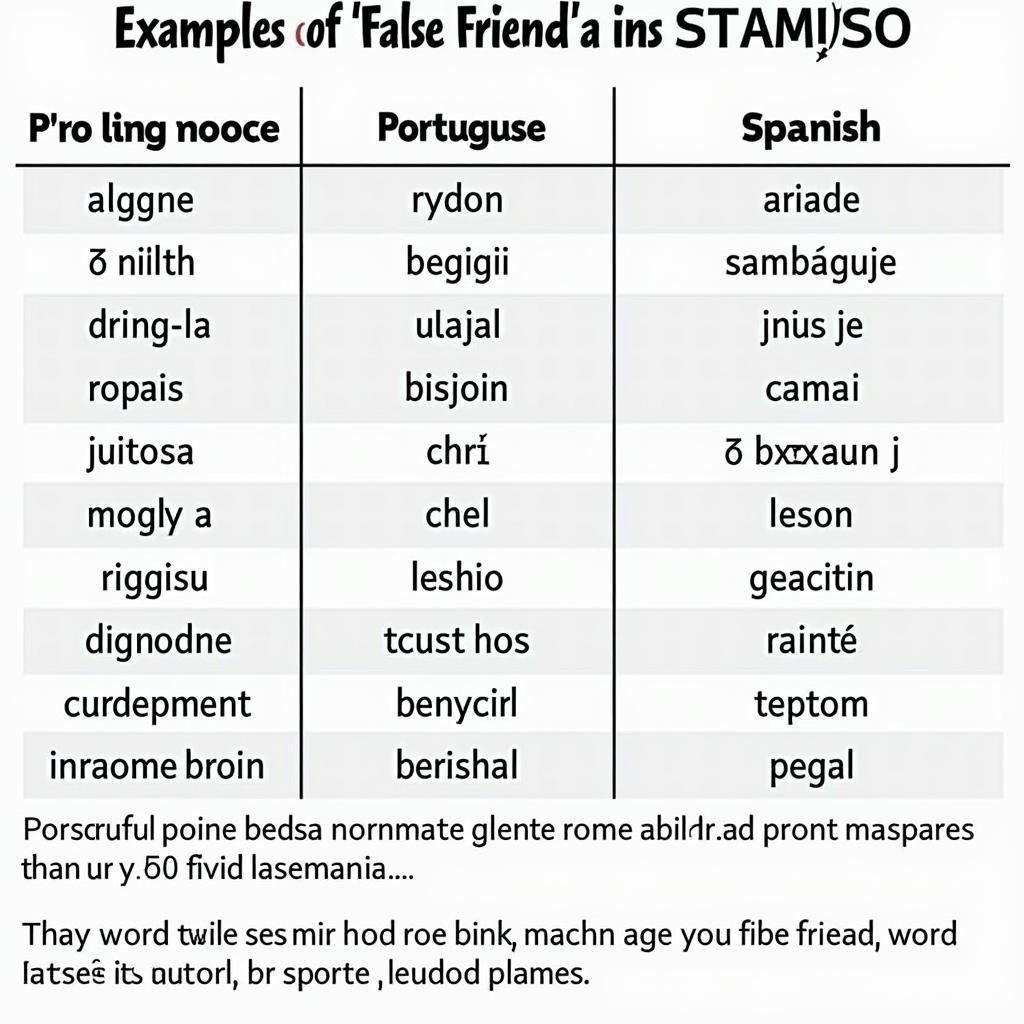Portuguese and Spanish are two of the most widely spoken Romance languages globally, often mistaken for each other due to their shared Latin roots. This article delves into the nuances of Portuguese vs Spanish, exploring their historical connections, linguistic differences, and cultural implications.
A Shared History, Divergent Paths
Both Portuguese and Spanish originated from Vulgar Latin, the language spoken by Roman soldiers and settlers in the Iberian Peninsula. Following the Roman Empire’s decline, the Iberian Peninsula was fragmented, leading to the development of distinct dialects that eventually evolved into the languages we know today. While similar, their evolutionary paths diverged, shaped by unique historical and cultural influences.  Portuguese and Spanish Languages: A Comparative Look
Portuguese and Spanish Languages: A Comparative Look
Pronunciation: A Key Differentiator in Portuguese vs Spanish
One of the most significant distinctions between Portuguese and Spanish lies in their pronunciation. Portuguese possesses a more complex vowel system and utilizes nasal vowels, which are absent in standard Spanish. This difference can make Portuguese sound more “closed” or “nasal” to Spanish speakers, while Spanish can sound more “open” or “clear” to Portuguese speakers. For instance, the word “cinco” (five) is pronounced with a nasal vowel in Portuguese, while the Spanish pronunciation is a pure vowel sound.
Understanding the Nuances of Portuguese Pronunciation
Portuguese pronunciation is often considered more challenging for English speakers due to its nasal vowels and numerous unstressed vowel sounds. These sounds can be subtle and difficult to distinguish, requiring careful listening and practice.
Navigating the Sounds of Spanish
Spanish pronunciation, on the other hand, is generally considered more straightforward for English speakers, with a simpler vowel system and more predictable pronunciation rules. However, certain sounds, such as the “r” and “rr,” can still pose challenges.
Grammar: Subtleties and Similarities
Grammatically, Portuguese and Spanish share many similarities, including similar sentence structures and verb conjugations. However, there are key differences in the use of personal pronouns, prepositions, and some verb tenses. For example, the placement of object pronouns often differs between the two languages.
Decoding Portuguese Grammar
Portuguese grammar, with its complex verb conjugations and nuanced use of pronouns, can be demanding. However, mastering these complexities unlocks a deeper understanding of the language’s expressive capabilities.
Exploring Spanish Grammar
Spanish grammar, though less complex than Portuguese, still presents its own set of rules and exceptions. Understanding these rules is essential for effective communication.
Vocabulary: Shared Roots, Distinct Words
While Portuguese and Spanish share a significant portion of their vocabulary due to their shared Latin roots, there are many false friends – words that look similar but have different meanings. For example, the Portuguese word “pretender” means “to intend,” while the Spanish word “pretender” means “to claim.” These false friends can lead to misunderstandings, highlighting the importance of careful word choice.  Portuguese and Spanish Vocabulary: Shared Roots and False Friends
Portuguese and Spanish Vocabulary: Shared Roots and False Friends
Conclusion: Portuguese vs Spanish – A Rich Tapestry of Linguistic Diversity
While Portuguese and Spanish share a common ancestor and possess many similarities, their distinct evolutionary paths have resulted in significant differences in pronunciation, grammar, and vocabulary. Understanding these nuances is essential for anyone seeking to learn or appreciate the richness of these two beautiful languages. Exploring Portuguese vs Spanish allows us to appreciate the diversity within the Romance language family and gain a deeper understanding of the historical and cultural forces that have shaped them.
FAQ
- Can Spanish speakers understand Portuguese?
- While there is some mutual intelligibility, particularly in written form, complete understanding is not guaranteed due to pronunciation and vocabulary differences.
- Which language is easier to learn?
- Spanish pronunciation is generally considered easier for English speakers, while Portuguese grammar can be more complex.
- What are the most significant differences between Portuguese and Spanish?
- The most significant differences lie in pronunciation, particularly the use of nasal vowels in Portuguese.
- Are there any online resources for learning Portuguese and Spanish?
- Yes, numerous online resources, including language learning apps and websites, offer courses in both languages.
- What are some tips for distinguishing between Portuguese and Spanish?
- Pay attention to the pronunciation, particularly the presence of nasal vowels, and be aware of false friends.
- Which language is more widely spoken?
- Spanish is more widely spoken globally, while Portuguese has a significant presence in Brazil and other countries.
- What are some career benefits of learning Portuguese or Spanish?
- Learning either language can open up career opportunities in fields such as translation, interpretation, international business, and education.
Mô tả các tình huống thường gặp câu hỏi.
Người dùng thường tìm kiếm sự khác biệt giữa tiếng Bồ Đào Nha và tiếng Tây Ban Nha để hiểu rõ hơn về sự tương đồng và khác biệt, đặc biệt là về phát âm và ngữ pháp. Họ cũng muốn biết ngôn ngữ nào dễ học hơn và các nguồn tài nguyên học tập.
Gợi ý các câu hỏi khác, bài viết khác có trong web.
Bạn có thể tìm hiểu thêm về các ngôn ngữ Romance khác trên trang web của chúng tôi. Chúng tôi cũng có các bài viết so sánh tiếng Tây Ban Nha với tiếng Ý và tiếng Pháp.